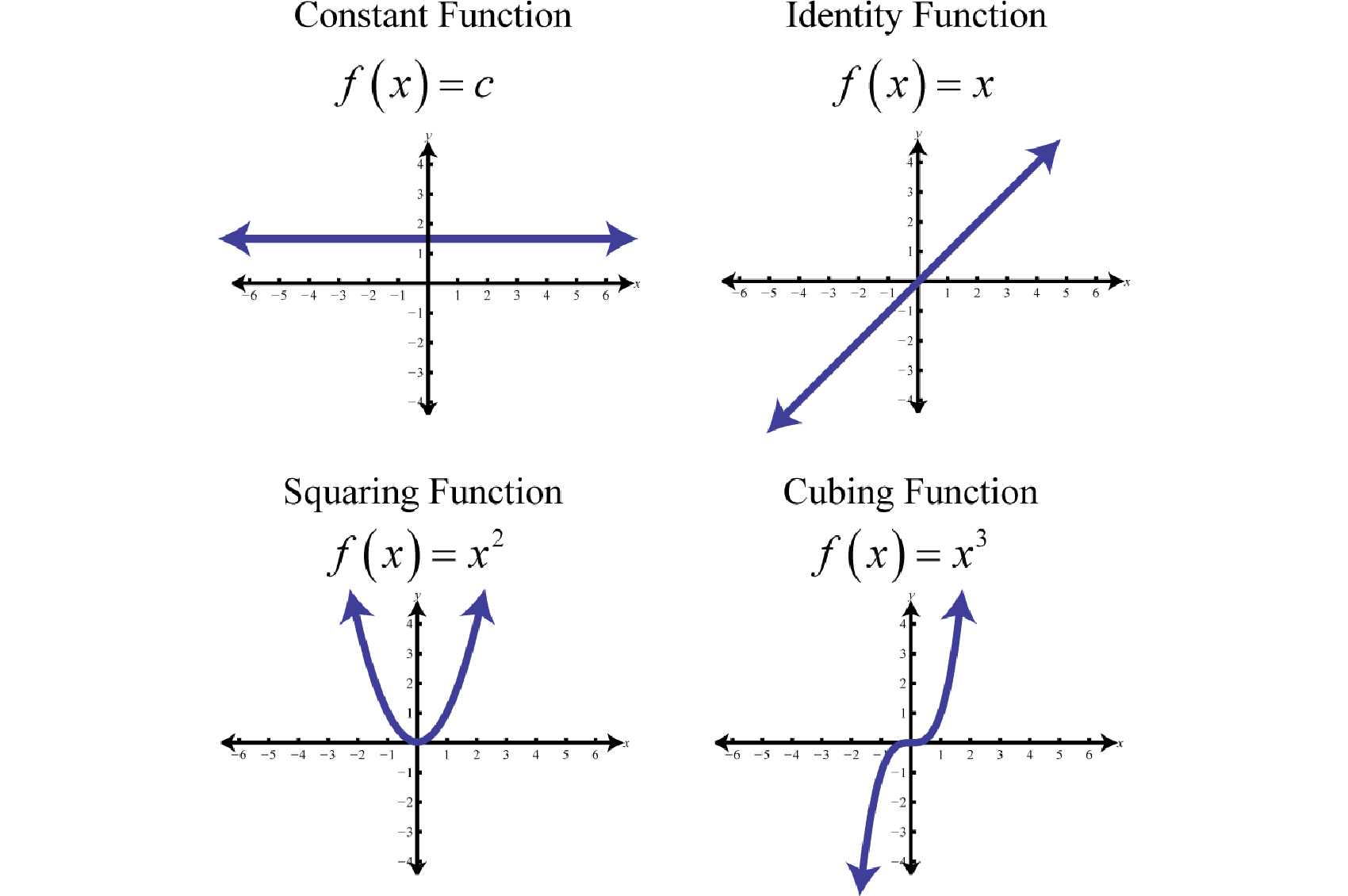Functions Homework Help
Math - Functions
A function is a set of directions that tells you how to find a value from one group when given a value from a first group. An important part of a function is that every value from the first group, or {"question,"} can only have one matched value from the second group, or {"answer."}
For example, if the first group is {"my friends"} and the second group is {"birthdays,"} each friend in the first group can only have one birthday, so you could call this relationship a function.
Functions are most commonly used in math by writing a formula for how to find the answer:
for example, f(x) = 2x. It can also be written y = 2x. In this function, for every number {"x"}, there is only one answer {"y"} or {"f(x)"} - which is two times the {"x."}
Another example of a function is
f(x) = x^2 + 2. If you try a few different numbers for x, you will see that there is only one possible f(x) for every x.
Functions don't have to have a specific equation that can describe them, as long as there is still only one matched {"answer"} for every given value of x.
For example, (1, 3), (2, 6), (3, 9) is a function (namely f(x) = 3x, for x = 1, 2, and 3). This is also a function, because there is only one matched value for every given x: (4, 15), (7, 21), (13, 12).
If there is an x that has more than one matched value, it is not a function.
For example: (1, 4), (2, 5), (1, 6) - this cannot be a function because when given x = 1, you can match it to either 4 or 6.
If looking at a graph, you can perform the vertical line test as a visual way to check whether every x has only one f(x). If you draw a vertical line at every point on the graph, and there is only ever one place where the graph crosses that line, it is a function. If the vertical line crosses the graph in more than one place, it is not a function.
Many students have issues with understanding what teachers or professors mean when they say a {"function"}. The best explanation I can provide is to think of a graph with a crazy insane line that travels all over the place. A function is exactly what its name implies, if you think of that graph you at any given point on it, you're provided with both an x value and a y value. That line can be expressed using variables which can range anything from negative infinity to infinity and based on your x value, the y value will also change. I like to think of it as you're inputting one number to obtain another. If you input an x value, then you will be provided with a y value and vice versa. A line is simply a representation of someone providing an x value or even a y value and being given the opposite.
Let’s take an example,
y=x+1
Now, if you were given a y value you could easily solve for an x value, so let’s do just that and say you were given y is equal to 2.
y=x+1
2=x+1
x=1
Now see? You input the y value provided and were able to solve for the x value. This is the essential definition of a function in mathematics.
Formulas act the same as functions to a certain regard. Formulas are functions in which you are typically provided with all the necessary information to solve it for a value.

Math Tutorials
- Math - Polynomials
- Math - Series and Sequences
- Math - Dividing Polynomials
- Math - Factoring Polynomials
- Math - Solving Quadratics
- Math - Solving Inequalities
- Math - Solving Equations
- Math - Complex Numbers
- Math - Matrix
- Math - Inverse Functions
- Math - Graphing Quadratic Functions
- Math - Graphing Polynomial Functions
- Math - Functions
- Math - Exponentials and Logarithms
- Math - Cramer's Rule
- Math - Absolute Value & Inequalities

